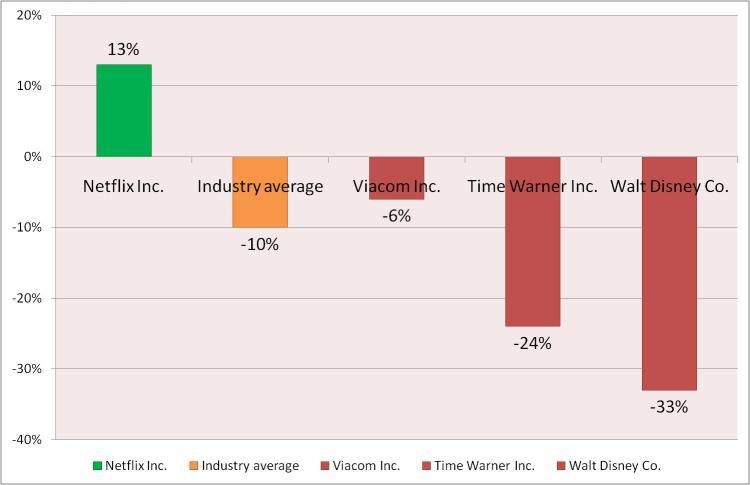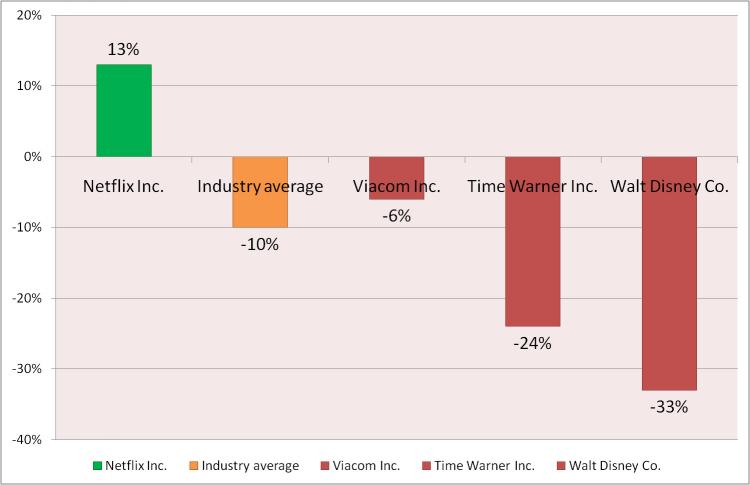News Analysis
Netflix, Inc. is known as the company that weaned America off video rental stores. And soon, it will be known as the company that transformed the home entertainment industry.
With 10 million users and counting, Netflix is the world’s leading online video rental service. The service, which lets customers keep DVDs for as long as they like, has become cheaper and more convenient for consumers than building their own film libraries or schlepping to the video rental store. Mail-averse customers can stream Netflix movies via the Web to their personal computers or television.
Netflix, it seems, has your entertainment needs covered.
So it shouldn’t come as a surprise to Hollywood movie studios that DVD sales are down drastically. Sales of DVDs declined almost 10 percent industry wide last year compared to 2007, according to the Digital Entertainment Group. Viacom, Inc. saw its home entertainment sales drop six percent last year. Ditto Time Warner Inc., whose DVD sales were down 24 percent; even the venerable Walt Disney Co. saw its sales drop to the tune of 33 percent last year.
Earlier this month, reports indicate that Blockbuster Inc., the largest operator of video rental stores in the United States, plans to shutter almost 1,000 stores—between 810 and 960 to be exact—by next year. There are currently around 4,300 Blockbuster stores in the nation. The company is buckling under its massive debt obligation and, make no mistake, Netflix has something to do with Blockbuster’s recent struggles.
Humble Beginnings
For Netflix, it wasn’t always this easy.
Reed Hastings founded the Los Gatos, Calif.-based Netflix in 1997 as a mail-order video rental company. By 1999, Netflix had dropped the pay-per-rental concept altogether and solely offered a subscription-based strategy.
The company was a dot-com era creation, and for years, faced questions about its survival. For a while, the Web was viewed as a mysterious, intangible entity, and many consumers shied away from sharing financial information with online retailers. As recent as four years ago, some analysts weren’t sure Netflix would be able to continue to incur losses and stay in business.
At the time, Blockbuster was a behemoth that dominated the video rental industry. In 2004, Blockbuster announced that it would enter the online video rental business and charged a flat rate of $19.99 per month, which undercut Netflix’s monthly fee by more than $2. Some analysts saw the move as a final nail in Netflix’s coffin. The announcement sparked a price war between the two companies, and some analysts threw their weight behind the more established and more profitable Blockbuster.
And the bad news didn’t end there. Netflix faced online retailing giant Amazon.com and Wal-Mart, who both announced online video rental services shortly after Blockbuster jumped into the fray.
The advent of high-speed Internet brought Web-streamed movies and videos to the masses. Traditional cable companies knew this, and were gearing up their own Internet-delivered TV services. Netflix potentially faced not only the video rental industry rivals, but also cable companies that would later offer video-on-demand.
Advantage Netflix
Market researchers have found that today’s consumers value convenience above all else. Another surprise to industry analysts has been the resiliency of the television business. Those who predicted a sudden demise of TV due to computer media centers have missed the mark.
Competitors soon discovered that while Netflix is a newcomer to the entertainment market, its customers were especially loyal to the service, and as DVD became the main movie media and gasoline prices began rising, Netflix’s DVD by mail service was hard to beat.
Netflix has two competitive advantages that catered to consumers’ need for convenience—its efficient regional shipping centers and sophisticated customer rating system.
Netflix has over 50 regional shipping centers across the United States that have sophisticated systems to track customers’ DVD queues. Upon receiving the old DVD back from a customer, a new one from the customer’s rental queue will ship. How efficient is the system? Netflix says that 95 percent of its customers receive their DVDs one day after shipping.
Some users laud Netflix’s movie recommendation and rating system as its “killer application.” The innovative rating system gives customers recommendations based on the customer’s rental history, preferences, and other similar users’ ratings to match customers up with new—and sometimes obscure—films.
The rating system has proven to be especially accurate, and today, 60 percent of all Netflix users depend on the recommendation system, the company says. And, in a constant race to improve, the company recently awarded a prize of $1 million to an inventor who created a program that further improved the accuracy of Netflix’s recommendations.
Fixture of the Future Living Room
But Netflix isn’t just content with shipping DVDs. The company knows that the future of entertainment lies with the Web.
Today, most of Netflix subscribers can stream unlimited videos over broadband, from a collection of more than 15,000 movies and television titles.
No computer? No problem. Netflix partnered with Microsoft last November to introduce a streaming service as a part of Xbox Live. Certain LG and Samsung Blu-ray players, as well as Sony Bravia HDTVs, also have the ability to stream movies and TV shows via Netflix.
In a recent interview with Wired magazine, Hastings shared his experiences of helping to launch the Roku Digital Video Player—a piece of hardware no bigger than a DVD player that streams videos to television sets over the Internet. Netflix originally envisioned building its own Netflix Player, but ultimately decided to shy away from hardware and instead partner with hardware manufacturers.
“The seamless integration of the Netflix service into our player has resulted in true ease of use for the consumer,” Roku founder Anthony Wood said in a statement. “Now, streaming video isn’t limited to people sitting in front of the PC; it’s ready for the TV in the living room.” And Wood knows a thing or two about TV. He developed the digital video recording (DVR) technology that displaced the VCR in living rooms across the United States.
Netflix has become one of the most successful dot-com ventures, but like in any business, new challenges always lie ahead—from iTunes and BitTorrent to Redbox and … well, you get the idea.
But Hastings has much grander plans for the company. In a recent interview with Reuters, Hastings said that he eventually wants to put Netflix’s services on mobile phones, Apple iPods and iPhones, as well as the Nintendo Wii and Sony’s PlayStation 3 video game consoles.
As for the once indomitable Blockbuster? Netflix’s market capitalization as of Sept. 25 stands at $2.66 billion. That’s more than 12 times the market value of Blockbuster.





